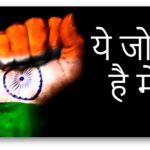Brand Supernovas (2025)

How many times have brands or companies simply be-dazzled you with their products, communication, pace of innovation, service delivery etc. and then suddenly dropped off the planet?
Not often, but I bet most of us would come up with an example or two.
Got thinking on similar lines and tried racking my brains to come up with a list my own. Funny thing with lists though is that you want the number of items on it to reach a nice round figure. What I figured was; whatever number that you can get to without stretching the core thought is probably the right number to have on the list. I am sure you nodded your head to that one.
Before I started writing this post I looked up the term “Supernova” in the dictionary
su·per·no·va (so͞o′pər-nō′və)
A rare celestial phenomenon involving the explosion of a star and resulting in an extremely bright, short-lived object that emits vast amounts of energy. Depending on the type of supernova, the explosion may completely destroy the star, or the stellar core may survive to become a neutron star.
I have for the purpose of this post highlighted what I believe are the operative parts.
Before I go on to cite examples let me establish the basic premise which is, a successful brand is the coming together of a great product or service and communication that resonates with the consumer leading to a distinctive identity, a marked preference and a position of leadership. Now, that’s an elevator pitch definition of brand success that covers most if not all bases.
Now brands fade for a variety of reasons and hundreds go into oblivion every day. Mostly because they didn’t deliver on the promise that they made. Reasons could be they stopped being relevant or they got complacent or they were poorly managed etc. The very opposite at one time or the other must have got them to the top. It is however important to make a distinction between brand supernovas and brand fads.
Brand supernovas are the ones that seemed to have got it right. Well at least for a while.
Now for the examples. Here are brands that shot up high and lit up the horizon while they were at it. Almost all these brands had a great product/service idea that went down extremely well with consumers, customers and investors. Not all of them spent big bucks on advertising and communication but they sure captured more than a fair share of imagination – to the extent that nobody imagined them going bust or fading away into oblivion.
- Fitbit – a pioneer in the wearables/fitness tracking space that rose to a dominant 37% market share and over USD10BN in market cap after going public in 2015. The heady success though didn’t last as Fitbit failed to sustain it’s first mover advantage. Wearables as a category saw a significant shift with brands like Apple upping their game. Fitbit’s revenue started to decline after 2016, and their market share also decreased considerably. Despite an initial high valuation, their brand value also saw a downward trend, eventually leading to their acquisition by Google in 2021. Google too sunset the brand soon after.
- PepperTap – Launched in 2014, India’s early attempt at quick commerce premised on a hyper-local /aggregation/commission based delivery model chalked up millions of subscribers and users as also millions of dollars in initial funding. To its credit, PepperTap had a fantastically simple and seamless user experience and some good algorithms to get the logistics right. However, a combination (arguably) of a misplaced sense of urgency wrt to expansion and heavy discounting saw the brand/company falter and lose its way. The fame and the glory were short-lived. By April 2016 PepperTap management had to announce a shut-down of it’s consumer facing operations. Subsequent attempts at revival in a B2B avatar too failed.
- Koo – Touted as India’s multi-lingual answer to X (erstwhile Twitter) this was a brand that lived only long enough to disappoint. The reason I mention Koo is that it reached a whopping 60MN users at it’s peak – no small achievement. Birthed at a time when India’s Nationalist sentiment was at it’s peak and perhaps helped along by an over-enthusiastic media response Koo did have something novel to offer to its users initially.
There of course are several other brands in the past decade that began their journey and met with great success. Some continue to grow, expand and flourish whilst some have run into some rough weather.
Some of the brands that spring to mind are Snapdeal, Groupon, Yumist which burnt bright for a brief while. Yet others such as Byju’s and WeWork on which the jury is still out.
To Be Or Not To Be: Should Brands Reinforce or Shatter Stereotypes?
 The germ of this article lies in the recent flutter that an interview by the CEO of a cola major has caused in the sociosphere [1] [2]. This post however, is not to express an opinion either for or against the views put forth but to raise a related relevant question. The question is with regard to stereotypes and the role brands and brand communication should be playing. If at all brands and brand communication have any culpability/responsibility with regard to reinforcing or breaking stereotypes.
The germ of this article lies in the recent flutter that an interview by the CEO of a cola major has caused in the sociosphere [1] [2]. This post however, is not to express an opinion either for or against the views put forth but to raise a related relevant question. The question is with regard to stereotypes and the role brands and brand communication should be playing. If at all brands and brand communication have any culpability/responsibility with regard to reinforcing or breaking stereotypes.As marketers sending out communication for and on behalf of our brands we rely heavily on our (collective/organizational/gut/experience) understanding of the consumer. The endeavor always is to gain and convert that killer insight into brilliant communication that hits home. It is for the keen eye to distinguish and separate the wheat from the chaff.
Brand communication over the years has tended to rely heavily on the stereotypes that society offers. These may be discrete pieces of communication from different brands but to consumers/audiences expose to this communication it is a single mass from which certain subliminal messages emanate albeit without being planned.
To explain my point and to connect back to the germ of this article I shall take the example of the stereotypes about women that get or got reinforced. Now it is important to note that each brand is doing its own bit and approaching it based on what its insight is about its category and consumer. However, they collectively end up reinforcing a certain image.
Take the commercials that were being aired on India television during the late eighties, even well into the nineties. The stereotype that was being reinforced was that of the Indian woman as the dutiful housewife. It was her responsibility to keep the utensils, clothes sparkling clean. She needed to ensure ends were met, kids were fed, even cook food good enough to keep the husband’s boss happy. As if all that were not enough she needed to look good and smell good for her husband when he came back home.
http://www.youtube.com/watch?v=PMYFCb_c0A0
Sign of times well not really, considering it would be round about this time that the Indira Nooyis, the Chanda Kochhars, the Naina Lal Kidwais and the Kiran Mazumdars were climbing rungs of the corporate ladder.
The India of the late eighties and nineties did not exist in a bubble. It was simply taking a leaf out of or getting “inspired by” communication of that was being aired elsewhere in Europe and America. It was taken to a satirical level in the book (and later on the movie adaptations) The Stepford Wives by Ira Levin.
There have been examples of brands attempting to break stereotypes as well. An example that comes readily is a campaign by a personal hygiene brand when they chose to dump the veiled, almost apologetic “Woh zaroori din” (translated: “those important days”) approach and said it like it is.
It’s not as if women alone have been subjected to such stereotypes. Men have been brought up with their own set of expectations to live up to. Advertising is replete with exaggerated versions of males as performers, winners, saviours of the world etc. etc. Gender stereotypes apart, brand communication has at times relied on race, colour and ethnic stereotypes as well. These were perhaps found acceptable in the times they were aired.
Ad creators and brand managers across the world will continue to deal with their existential dilemma of reinforcing or breaking stereotypes that form in our society.
So who really is to blame if one feels obligated to conform to these stereotypes? If it is indeed the society then the answer at some level is I, Me and Myself.
To close a few lines penned by the Bard of Avon from Hamlet.
“To be, or not to be? That is the question—
Whether ’tis nobler in the mind to suffer
The slings and arrows of outrageous fortune,
Or to take arms against a sea of troubles,
And, by opposing, end them?”


